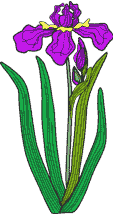|
|
|
 |
| 11. Conditioning Your Pond |
AquaLife Complete is a great product to condition tap water and render it healthy for both fish and plants. You can create healthy, crystal clear and fish-friendly pond water. It should be used with the first filling. This product binds metal ions and protects your pond animals against chlorine and other environmental pollutants.
AquaLife Complete
|
 |
AquaLife Barley Straw Extract
Barley straw is a biological filtering algicide that is used as a preventative to combat floating algae. This product also works as a fungicide and stimulates the growth of plants.
AquaLife Barley Straw Extract
|
 |
AquaLife Water Garden Cleaner_ASF
Place aquatic plants in the pool. Stock the pond lightly with fish and scavengers in the beginning. Water Garden Cleaner should be added when fish are placed in the pond to help jump start your filter and prevent fish loss. This useful product contains the necessary bacteria to convert ammonia and nitrite from fish waste to nitrate which facilitates addition of more fish. Water Garden Cleaner, when used regularly, also breaks down organic waste that accumulates over time and promotes algae growth.
Water Garden Cleaner ASF
|
 |
|
|
 |
 |
PUMPS & WATER FEATURES
Water movement, fountains, waterfalls, filtration and water features can make thedifference between “the swamp in the backyard” and the ultimate gardening experience. All pond water should be circulated every 2-6 hours through biological filtration.
|
|
|
|
TO CALCULATE POND CAPACITY
|
 |
You should know the approximate capacity of your pond for the addition of fish, water conditioners and medications.
|
|
Rectangular Ponds
|
Multiply length by width by depth (in feet) to obtain volume in cubic feet.
Multiply this figure by 7.5 to give the pond capacity in gallons.
Example: Your pond is 12’ long by 10’ wide and is 2’ deep.
12’ long X 10” wide X 2’ deep = 240 cubic feet in pond,
then, 240 cubic feet X 7.5 = 1,800 gallons
|
|
Circular Ponds
|
Multiply depth in feet by the square of the radius in feet, then multiply
this figure by 3.14 to give cubic feet.
Then multiply this number by 7.5 to give the pond’s
approximate capacity in gallons.
Example: Your circular pond is 2’ deep and 10’ across.
2’ deep X (5’ X 5’) X 3.14 = 157 cubic feet,
then, 157 cubic feet X 7.5 = 1177.5 gallons |
|
| The Timed Volume Method |
Timed Volume is the most accurate method of measuring pond volume and is especially helpful in determining the volume of irregularly shaped pools, as well as circular and rectangular pools. You'll need a manageable container of known volume, for instance, a 5 gallon bucket and a garden hose.
First, wth the hose turned on full flow, fill the bucket and record the time to fill it. You may want to repeat this a couple of times to make sure your timing is accurate. Second. fill the pond with the hose on full flow and record the amount of time required to fill it. Now you're ready to calculate the volume.
Make sure all the units of time are the same - minutes is most convenient. If the bucket takes 1/2 a minute to fill, the time is .5 minutes. If the pond takes 3 hours to fill, your time converted to minutes is 180. Divide the time to fill the pond by the time to fill the bucket, then multiply that number by the gallons in the container. This number is the number of gallons in the pond. In this example, the final pond volume is 1800 gallons.
|
|
|
 |
|
|
|
|
|
|
|
|
|